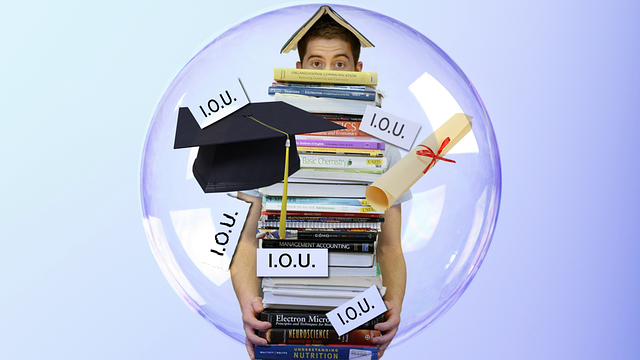
I received an email from a concerned parent whose student was going to be attending orientation next week. In the email, he confessed that he might need some help with information regarding financing his son’s college education. I was surprised that he waited so long. Unfortunately, I had to advise him that at this point his only options were private loans and advise his student to apply for scholarships over the summer.
Parents should consider college funding even before their student applies to college. The inevitable result of lack of planning is parents and students borrowing to pay and usually borrowing more than they can repay after graduation.
What do the statistics say?
With school starting shortly, student loan borrowing often appears in the news. It’s especially prevalent now with presidential candidates promising to erase student loan debt. Wherever you stand in the political landscape, it’s clear from the statistics that students have borrowed more than they can repay.
According to a 2018 report by the Federal Reserve Bank of New York, as many as 44.7 million Americans have student loan debt, that’s one in five adult Americans. The total amount of student loan debt is $1.47 trillion as of the end of 2018 — more than credit cards or auto loans.
How do you make wise financial choices?
Before applying to college, you and your student should investigate the cost. You can gather the information either on the college website or by using College Navigator. When viewing these figures, you should also research the college’s financial aid statistics—what percentage of students are awarded aid, how much aid is awarded and how much do students typically borrow. Since every family’s financial situation is different, these figures should help determine if the college is affordable to attend.
How does financial aid play into the equation?
If you complete the FAFSA, your student will receive some form of financial aid. The most common is student loans, but colleges also award grants and merit aid as well. Always complete the FAFSA, even if you don’t think you will qualify for aid. Colleges use the information on the FAFSA when awarding scholarships and grants. No FAFSA, no aid.
What’s the key to avoid borrowing too much?
Use repayment calculators before you sign on the dotted line. The rule of thumb is that students should only borrow as much to pay for college as their first year’s salary. By keeping your debt under one year’s salary, you won’t have to put more than about 10% of your income towards student loan payments. Borrowing more than your student can afford to repay sets them up for overwhelming debt after graduation. Your student can look at salary comparisons for their anticipated career at PayScale.com.
How can you avoid borrowing to pay for college?
The key to not borrowing to pay for college is to receive merit aid, grants, and outside scholarships. Your student should apply to a college at the top of his or her applicant pool. This means the college will be more likely to award aid to attract your student. Grades and standardized test scores are also a key factor in awarding aid. Your student should focus throughout college to pursue excellence in these areas. And, don’t forget outside scholarships. Your student should focus time and effort in applying to every scholarship he or she qualifies for. This means starting early and planning to submit the best application. Click here for scholarship application tips and see how your student can win enough money to pay for college.
Finally, borrow wisely. Only borrow what you need. Your student can borrow the maximum amount, but only borrow what is necessary. Just because you can, doesn’t mean you should. Choose the loans with the lowest interest rates first.









